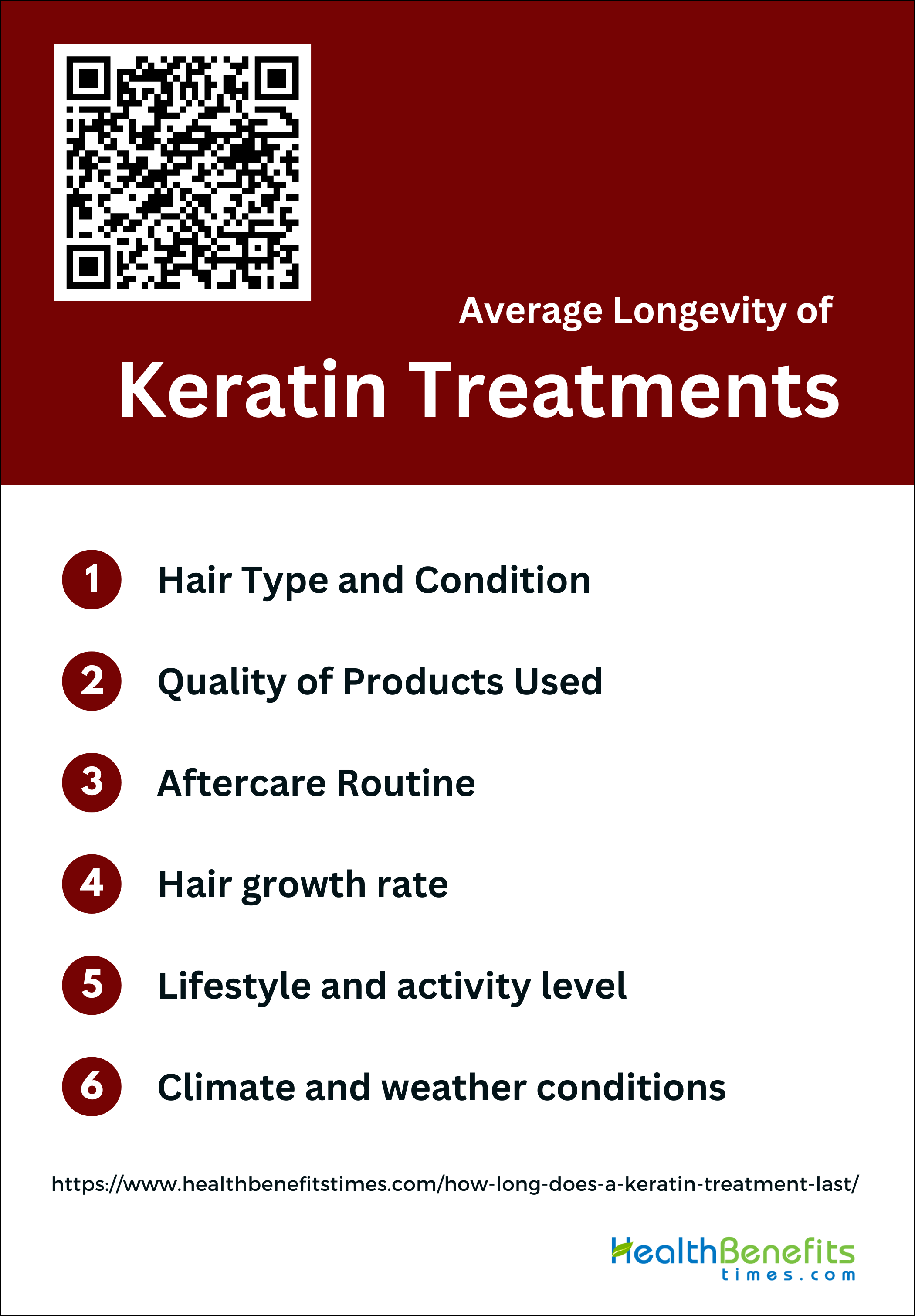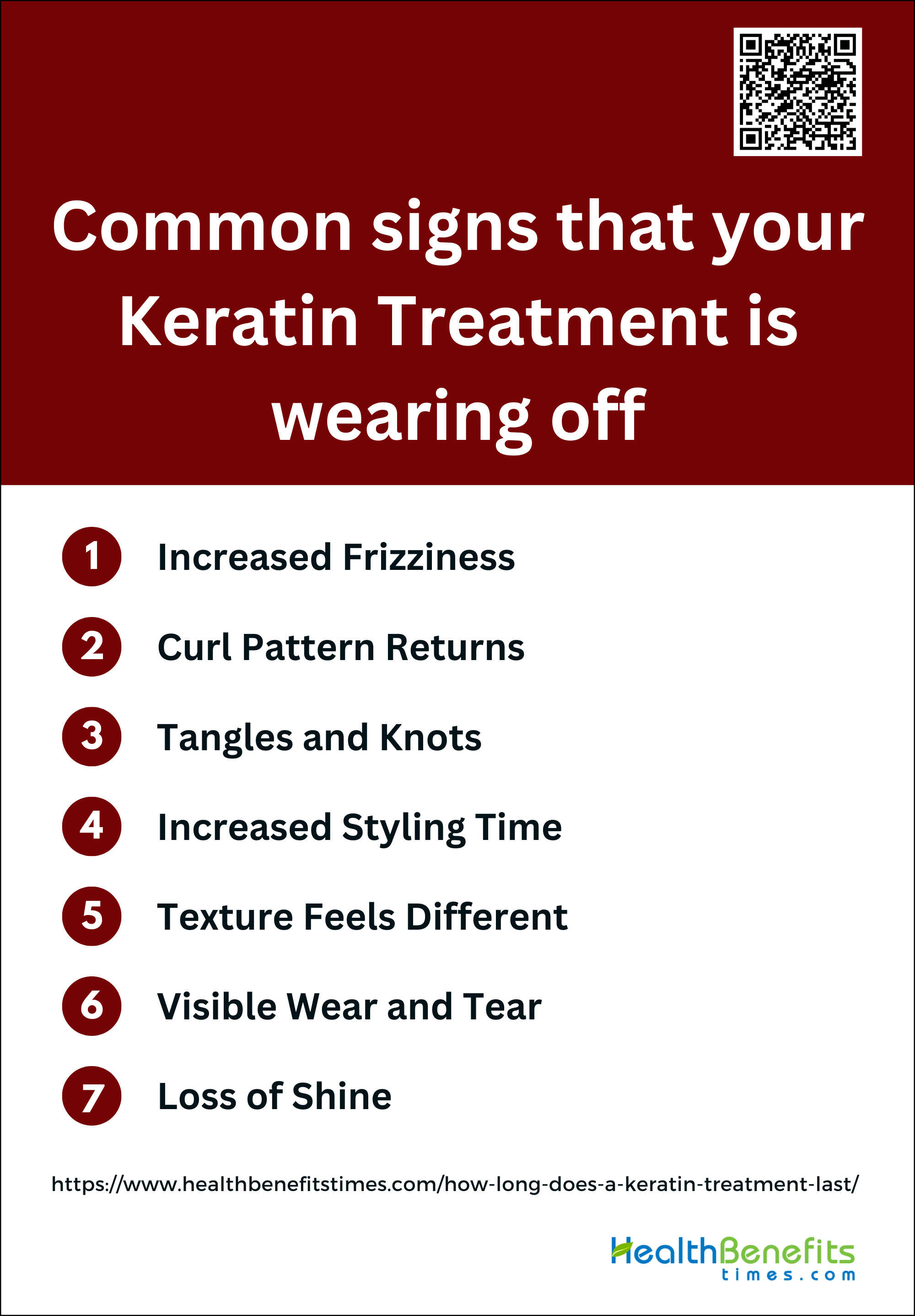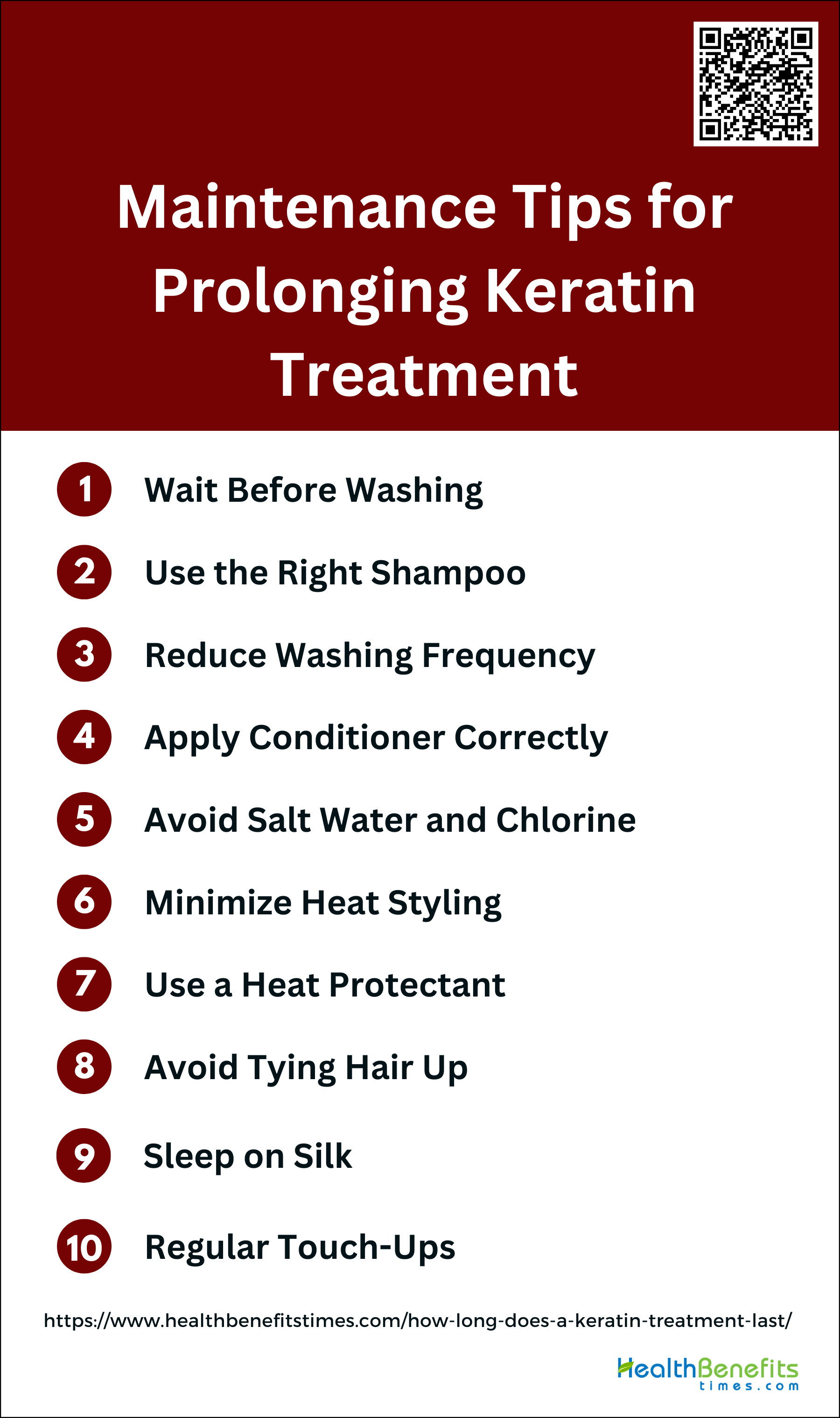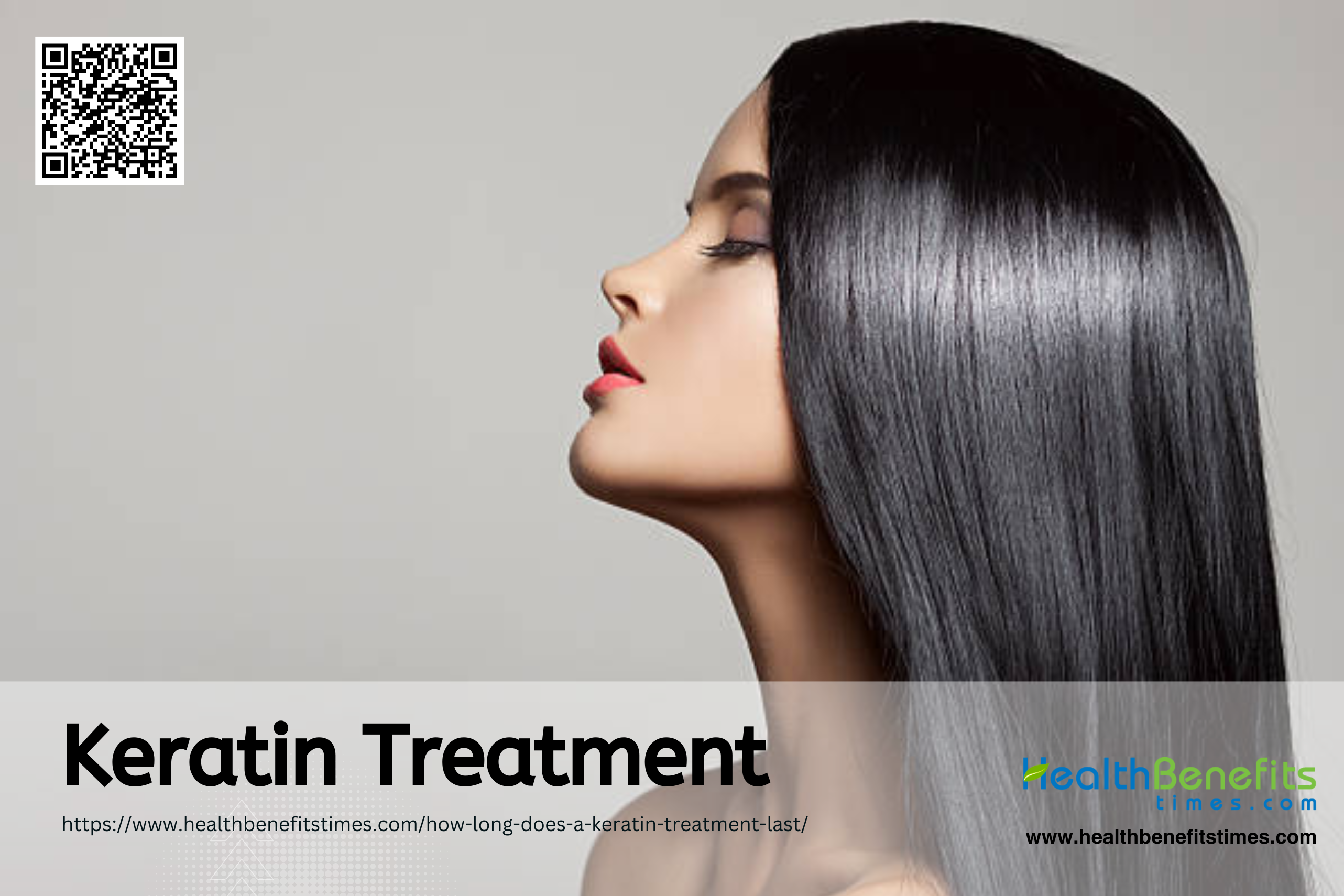 Keratin treatment refers to a cosmetic procedure that involves the application of keratin-based products to the hair to improve its appearance and manageability. Keratin is a protein naturally found in hair, and treatments aim to replenish this protein, particularly on damaged or processed hair. The process typically results in hair that is smoother, less frizzy, and often straighter. Research has shown that keratin extracts and hydrolysates can restore hair properties, with certain chemical modifications enhancing their binding to hair fibers, thereby improving hair strength and resilience.
Keratin treatment refers to a cosmetic procedure that involves the application of keratin-based products to the hair to improve its appearance and manageability. Keratin is a protein naturally found in hair, and treatments aim to replenish this protein, particularly on damaged or processed hair. The process typically results in hair that is smoother, less frizzy, and often straighter. Research has shown that keratin extracts and hydrolysates can restore hair properties, with certain chemical modifications enhancing their binding to hair fibers, thereby improving hair strength and resilience.
Brazilian keratin treatments are well-known for their ability to make curly hair more manageable and frizz-free. However, there have been concerns about the safety of formaldehyde in some of these products. Researchers have also studied keratin-based peptides and found that they can strengthen relaxed hair without causing any harm. These peptides have shown improvements in the mechanical and thermal properties of hair when applied in water-based formulations. Moreover, keratin essence has been discovered to protect hair from damage and improve coloring efficiency and hair structure. Some studies have even suggested combining keratin treatments with natural substances like halloysite clay nanotubes to create protective coatings on hair, which can help reduce damage from UV rays.
Average Longevity of Keratin Treatments
The average longevity of keratin treatments varies, with most sources indicating a range between 2 to 6 months. This variation is influenced by several factors as described below:
Factors Affecting Treatment Duration
1. Hair Type and Condition
The duration and effectiveness of keratin treatments can be influenced by various factors, including hair type and condition. Straight hair tends to retain the effects of a keratin treatment for up to three months, as the treatment’s primary function—smoothing out frizz and reducing curl—is less intensive on already straight strands. In contrast, those with wavy or curly hair may find the treatment’s effects lasting a shorter period, typically around two months, due to the natural tendency of their hair to revert to its original state. Additionally, the condition of the hair plays a pivotal role; healthy hair with minimal damage absorbs and retains the keratin more effectively, potentially extending the treatment’s lifespan up to five months. Conversely, damaged hair, which may have lost nutrients and moisture due to factors like excessive heat styling, chemical processing, or coloring, may not hold onto the treatment as long, reducing its effectiveness to approximately two months. Therefore, understanding your hair’s type and current condition is essential in setting realistic expectations for how long the benefits of a keratin treatment will last.
2. Quality of Products Used
High-quality keratin products, infused with essential proteins and nourishing ingredients, are designed to penetrate deeply into the hair shaft, replenishing the hair’s natural keratin levels more effectively. These products often contain a blend of natural oils, such as argan or coconut oil, and keratin proteins that work together to repair, strengthen, and smooth the hair. On the other hand, lower-quality treatments may not provide the same level of nourishment and smoothing effect, leading to results that are less durable and less satisfying. The formulation of the keratin solution, including its ability to bond with the hair’s natural keratin and the absence of harmful chemicals like formaldehyde, plays a crucial role in determining how long the treatment’s benefits will last. Additionally, the compatibility of aftercare products, such as shampoos and conditioners, with the keratin treatment can also influence its longevity. Using sulfate-free and sodium chloride-free hair care products post-treatment is essential to maintain the treatment’s effects for as long as possible. Therefore, investing in high-quality keratin treatment products and following the recommended aftercare regimen are key factors in maximizing the duration and success of a keratin treatment.
3. Aftercare Routine
The longevity of a keratin treatment is heavily influenced by the aftercare routine. To maximize the duration of the treatment’s effects, it is crucial to use specialized hair care products. Sulfate-free and sodium chloride-free shampoos and conditioners are essential as they are less likely to strip the hair of the keratin coating. These products help maintain the smoothness and straightness imparted by the treatment. Additionally, avoiding salt water and chlorine can prevent premature breakdown of the keratin. Heat styling should be minimized, but when necessary, using a heat protectant can shield the hair from damage. Regular use of leave-in conditioners or keratin serums can also nourish the hair and reinforce the treatment, keeping the hair manageable and lustrous for a longer period. Following these aftercare steps diligently can significantly extend the life of a keratin treatment, ensuring lasting results.
4. Hair growth rate
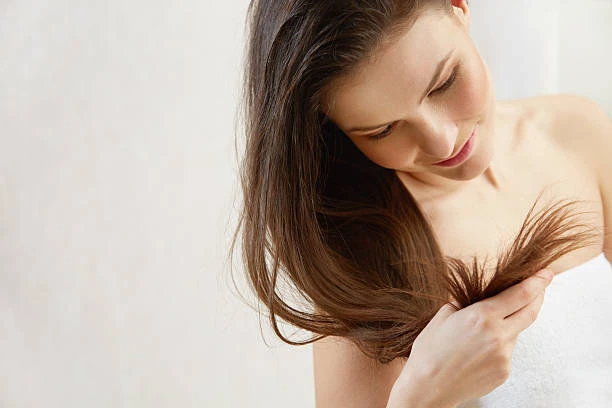
Keratin treatments work by coating the hair strands with a layer of keratin, which smooths and straightens the hair, making it appear sleeker and more manageable. This treatment does not change the structure of the hair permanently; instead, it temporarily alters the appearance and texture of the hair. As new hair grows from the scalp, it will do so with its natural texture, which has not been treated with keratin. Therefore, individuals with faster hair growth may notice their natural hair texture reappearing at the roots more quickly than those with slower hair growth rates. This regrowth can create a noticeable difference between the treated hair and the new growth, potentially requiring more frequent touch-up treatments to maintain a uniform appearance. Typically, keratin treatments last between 2 to 6 months, but for someone with rapid hair growth, the desire for a touch-up treatment might arise sooner to address the contrast between the new growth and the treated lengths.
5. Lifestyle and activity level
Lifestyle and activity level significantly impact the longevity of a keratin treatment. Individuals who engage in frequent swimming, for instance, expose their hair to chlorinated water, which can strip away the keratin coating more rapidly. Similarly, those who exercise regularly may wash their hair more often to remove sweat, which also shortens the duration of the treatment due to increased shampooing. The type of shampoo matters as well; using sulfate-free shampoos can help preserve the keratin treatment longer. Additionally, exposure to UV rays during outdoor activities can degrade the keratin layer, reducing its smoothing effects. Therefore, those with active lifestyles or who spend a lot of time outdoors may find that their keratin treatment does not last as long as advertised, typically around 2 to 6 months, and might require more frequent touch-ups to maintain the desired hair texture and appearance.
6. Climate and weather conditions
Climate and weather conditions play a crucial role in determining the longevity of a keratin treatment. High humidity levels, for instance, can be particularly challenging, as they tend to cause the hair to absorb moisture from the air, leading to frizz and potentially diminishing the smoothing effects of the keratin treatment. In contrast, dry climates might help extend the life of the treatment, as there is less moisture in the air to affect the hair. However, extremely dry conditions can also lead to hair dehydration, which might compromise the keratin coating’s integrity over time. Additionally, exposure to direct sunlight for extended periods can degrade the keratin layer, as UV rays can break down the proteins that make up the treatment. Areas with frequent rain or where individuals are exposed to saltwater from the ocean can also see a shortened duration of their keratin treatment effects, as both rainwater and saltwater can strip the hair of its keratin coating more quickly. Therefore, individuals living in climates with high humidity, frequent rainfall, or strong sun exposure may need to take extra precautions to protect their hair and potentially schedule touch-up treatments more frequently to maintain their desired hair texture and appearance.
Common signs that your Keratin Treatment is wearing off
1. Increased Frizziness
One of the first signs that a keratin treatment is wearing off is an increase in frizziness. Initially, keratin treatments work by smoothing down the hair cuticles, which reduces frizz and gives the hair a sleek appearance. As the treatment begins to fade, the hair’s natural texture, which may be prone to frizz, starts to reappear, especially in humid or wet conditions.
2. Curl Pattern Returns
For those with naturally curly or wavy hair, the return of their original curl pattern is a clear indicator that the effects of the keratin treatment are diminishing. While the treatment temporarily alters the structure of the hair to make it straighter, as it wears off, the natural curls or waves will gradually return, often starting at the roots and spreading to the ends of the hair.
3. Tangles and Knots
Post-keratin treatment, hair usually becomes easier to manage and less prone to tangling due to the smoothness and alignment of the hair cuticles. As the treatment wears off, you might start noticing an increase in tangles and knots, which can make combing and styling more challenging and time-consuming.
4. Increased Styling Time
Initially, one of the benefits of a keratin treatment is reduced styling time, thanks to the hair’s smoother texture and increased manageability. As the treatment wears off, you may find that it takes longer to style your hair, requiring more effort to achieve the same smoothness and style retention as before.
5. Texture Feels Different
The texture of your hair can also signal that a keratin treatment is wearing off. Initially, your hair feels incredibly smooth and soft. Over time, as the keratin washes out, the hair may feel coarser or drier, and you might notice that it doesn’t have the same silky texture that it did immediately following the treatment.
6. Visible Wear and Tear
Another sign of a keratin treatment wearing off is visible wear and tear on the hair. This could manifest as split ends, roughness, or a generally less healthy appearance. The protective coating provided by the keratin is no longer as effective, which can leave the hair more vulnerable to environmental damage.
7. Loss of Shine
Finally, a noticeable decrease in the shine of your hair can indicate that a keratin treatment is wearing off. Initially, keratin treatments can give the hair a glossy, vibrant look. As the treatment fades, this shine can diminish, leaving the hair looking duller than before.
Maintenance Tips for Prolonging Keratin Treatment
Keratin treatments can transform frizzy, unruly hair into sleek, manageable locks. However, to maintain the silky smoothness and extend the life of your treatment, proper aftercare is crucial. Here are 10 essential maintenance tips to help you get the most out of your keratin treatment:
1. Wait Before Washing
To maximize the benefits of a keratin treatment, it’s essential to wait at least 72 hours before washing your hair. This period allows the keratin to fully bond with the hair strands, ensuring the treatment’s durability and effectiveness. Washing your hair too soon can wash away the keratin prematurely, diminishing the smooth and sleek results you desire. Patience during these initial days can significantly extend the life of your treatment, keeping your hair looking salon-fresh for longer.
2. Use the Right Shampoo
Choosing the right shampoo is pivotal in maintaining the results of your keratin treatment. Sulfate-free shampoos are recommended because sulfates can strip the keratin from your hair, reducing the longevity of the treatment. These gentle shampoos help to maintain the smoothness and manageability provided by the keratin, ensuring your hair remains sleek and frizz-free. Additionally, using a shampoo specifically designed for keratin-treated hair can provide extra nourishment and protection, keeping your hair healthy and vibrant.
3. Reduce Washing Frequency
Reducing the frequency of your hair washes is a simple yet effective way to prolong the effects of a keratin treatment. Frequent washing can lead to the keratin being washed away more quickly, shortening the lifespan of the treatment. By limiting hair washing to two or three times a week, you can help preserve the keratin, maintaining the smoothness and straightness of your hair for a longer period. This approach not only benefits your keratin-treated hair but also promotes overall hair health by retaining natural oils.
4. Apply Conditioner Correctly
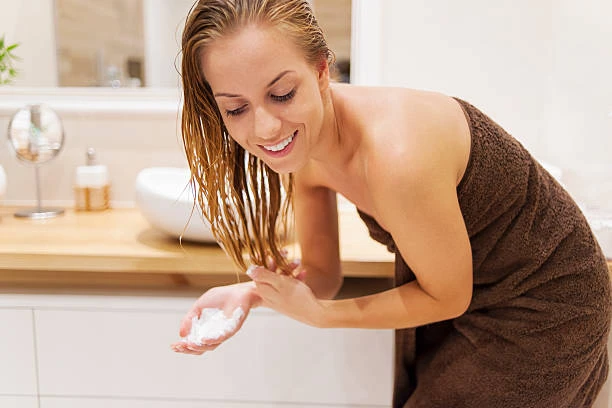
Conditioning is crucial for maintaining the health and appearance of keratin-treated hair. However, it’s important to apply conditioner correctly—focusing on the mid-lengths and ends while avoiding the roots. This method prevents the scalp from becoming overly oily and ensures that the conditioner doesn’t interfere with the keratin treatment. Using a conditioner formulated for keratin-treated hair can further enhance the treatment’s benefits, providing the necessary hydration and protection to keep your hair looking its best.
5. Avoid Salt Water and Chlorine
Salt water and chlorine can be detrimental to keratin-treated hair, causing the treatment to fade prematurely. These elements can strip away the keratin, leading to frizz and dryness. To protect your hair, it’s advisable to minimize exposure to salt water and chlorine. If swimming is unavoidable, pre-rinsing your hair with fresh water and applying a protective leave-in conditioner can help shield your hair from these harmful elements, preserving the smoothness and shine of your keratin treatment.
6. Minimize Heat Styling
While keratin treatments make hair more manageable and less prone to frizz, minimizing the use of heat styling tools can further extend the treatment’s lifespan. Excessive heat can break down the keratin, leading to damage and a reduction in the treatment’s effectiveness. When heat styling is necessary, using lower temperature settings and limiting the frequency can help protect your hair, maintaining the integrity of the keratin treatment and ensuring your hair remains healthy and vibrant.
7. Use a Heat Protectant
Using a heat protectant is essential when styling keratin-treated hair with heat. Heat protectants form a barrier on the hair shaft, minimizing damage from heat styling tools. This protective layer helps to preserve the keratin treatment, maintaining the smoothness and shine of your hair. By incorporating a heat protectant into your styling routine, you can enjoy the benefits of your keratin treatment for a longer period, keeping your hair looking salon-perfect.
8. Avoid Tying Hair Up
After getting a keratin treatment, make sure not to tie your hair up or use accessories that can cause marks or dents. These marks can ruin the smoothness of the treatment and affect how it looks. Once your hair has settled, use gentle, loose hair ties to avoid tension and marks. This will help keep your hair looking sleek and straight.
9. Sleep on Silk
Sleeping on a silk pillowcase can significantly benefit keratin-treated hair. Silk’s smooth surface reduces friction between your hair and the pillowcase, minimizing the risk of frizz and tangles. This gentle interaction helps to preserve the smoothness and straightness of the keratin treatment, extending its longevity. Additionally, silk can help retain your hair’s natural moisture, further enhancing the health and appearance of your keratin-treated hair.
10. Regular Touch-Ups
To maintain the optimal appearance of keratin-treated hair, regular touch-ups are recommended. Depending on your hair type, growth rate, and lifestyle, touch-ups every 3 to 6 months can help keep your hair looking its best. These maintenance sessions address new growth and any areas where the keratin may have begun to fade, ensuring your hair remains smooth, straight, and manageable. Regular consultations with your stylist can help determine the best schedule for your touch-ups, tailored to your specific needs.


